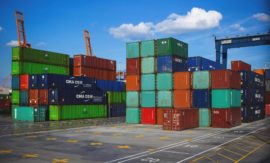Intended learning outcomes: Produce an overview on supply chain planning. Differentiate between production planning and control (PPC) and a PPC system.
Planning (in an enterprise) is the process of setting goals for the organization and choosing various ways to use the organization’s resources to achieve the goals [ASCM22].
Supply chain planning is the determination of a set of policies and procedures that govern the operation of a supply chain. It includes the determination of marketing channels, promotions, respective quantities and timing, inventory and replenishment policies, and production policies. Planning establishes the parameters within which the supply chain will operate [ASCM22].
Supply chain planning aims at having the right item in the right quantity at the right time at the right place for the right price in the right condition for the right customer — every time. This task must include the entire supply chain. Once the weighing of the entrepreneurial objectives is done (Section 1.3.1), supply chain planning entails a number of principles, methods, and procedures in order to accomplish the following subtasks:
- Evaluate the various possibilities of distribution, production, and procurement that may be utilized to achieve set objectives.
- Create a program in suitable detail, i.e., determine salable products, their quantities, and deadlines. Revise the plans periodically in response to changing constraints.
- Elaborate and realize distribution, production, and procurement plans derived from the program, in suitable detail and in consideration of objectives and constraints.
Planning decisions thus concern logistics issues, such as: When, how, and in what quantities will goods be procured, produced, or distributed? Will inventory be inserted between storehouse, factories, and the supply chain community? Which services will be performed, when, where and how? What personnel and what assets will be used? When will delivery to customers and subsidiaries take place?
A supply-chain planning & control system is the suitable information logistics for supply chain planning.
Here, the term “control” should not be interpreted in a technical sense as complete mastery of a controlled process. In companies, the term indicates regulation or even just coordination. Because of the established use of the term (for example, “production planning and control”), however, we maintain it here. In the manufacturing stage within the product life cycle, such a system is frequently called PPC, or production planning and control. MPC (manufacturing planning and control) is another classic abbreviation. See [VoBe18].
The term PPC sometimes leads to misunderstandings, because the term PPC system is used to refer to both the logistics task and the computer software supporting the task. These two meanings are often mixed deliberately. Upon the background of misplaced optimism with regard to PPC software, demagogues — when the use of PPC software fails — tend to declare that the entire scientific body of knowledge on planning & control is “useless.” They overlook the fact that the primary responsibility for understanding methods and their practical application always falls upon the people in the company. Course 9 examines these issues in more detail.
Continuation in next subsection (1.1.9b).
Course section 1.1: Subsections and their intended learning outcomes

1.1 Basic Definitions, Issues, and Challenges
Intended learning outcomes: Produce an overview on terms of the working environment and of business life. Explain service orientation in the classical industry, product orientation in the service industry, and the industrial product-service system. Disclose the product life cycle, the synchronization of supply and demand, and the role of inventories. Produce an overview on supply chain management, the role of planning and control as well as the SCOR model.

1.1.1 Work, Task, Process, Method, Object, etc. — Important Terms of the Working Environment
Intended learning outcomes: Produce an overview on terms of the working environment, such as work, task, function, order, procedure, process, method, object, business.

1.1.1b Value-Added, Business Process, Material, Product, etc. — Important Terms of Business Life
Intended learning outcomes: Produce an overview on terms of business life, such as value-added, business process, business method, business object, goods, item, part, component, material, product, artifact, management, etc.

1.1.2 Service and Servitization — Service Orientation in the Classical Industry
Intended learning outcomes: Present terms of the service domain such as service, customer service, service in the originary sense, servitization. Differentiate between a (primary, or core) product, a product in a broad sense, and a product in the most comprehensive sense.

1.1.3 The Service Industry and Industrialization of Service — Product Orientation in the Service Industry
Intended learning outcomes: Differentiate between service industry and classical (or conventional) industry. Produce an overview on industrialization of service.

1.1.4 The Industrial Product-Service System IPSS (or IPS2)
Intended learning outcomes: Present the industrial product-service system. Explain product-oriented, use-oriented, and result-oriented services as well as their degree of intangibility.

1.1.5 The Product Life Cycle: Design and Manufacturing, Service and Use, Recycling and Disposal
Intended learning outcomes: Differentiate between terms such as logistics, operations, logistic management, operations management, and value-added management.

1.1.5b Logistics, Operations, Logistics Management, Operations Management, and Value-Added Management
Intended learning outcomes: Differentiate between terms such as logistics, operations, logistic management, operations management, and value-added management.

1.1.6 The Customer Tolerance Time (or Demand Lead Time), and the Role of Inventories
Intended learning outcomes: Describe supply, demand, lead time, and customer tolerance time. Explain the problem of temporal synchronization between supply and demand as well as the role of various kinds of inventories in solving this problem.

1.1.7 Supply Chain, Extended Enterprise, and Supply Chain Management
Intended learning outcomes: Describe the reasons for logistics networks, production networks, procurement networks, distribution networks, and service networks. Produce an overview on the supply chain, the extended enterprise and supply chain management.

1.1.8 Circular Economy and Integral Logistics Management
Intended learning outcomes: Present circular economy and integral logistics management.

1.1.9 Supply Chain Planning and the Planning & Control System
Intended learning outcomes: Produce an overview on supply chain planning. Differentiate between production planning and control (PPC) and a PPC system.
